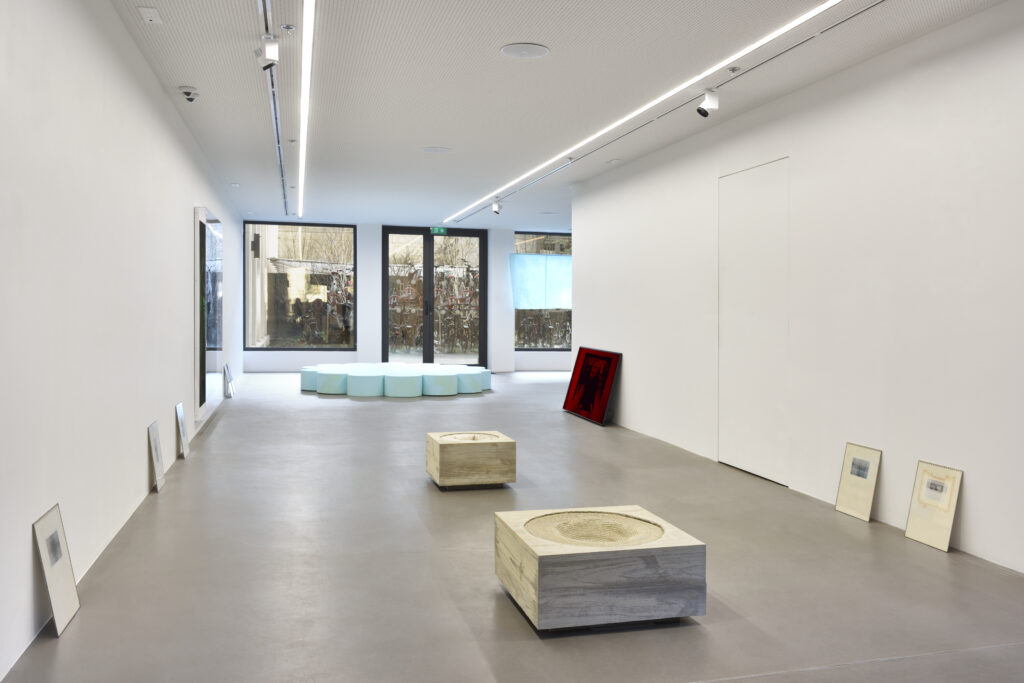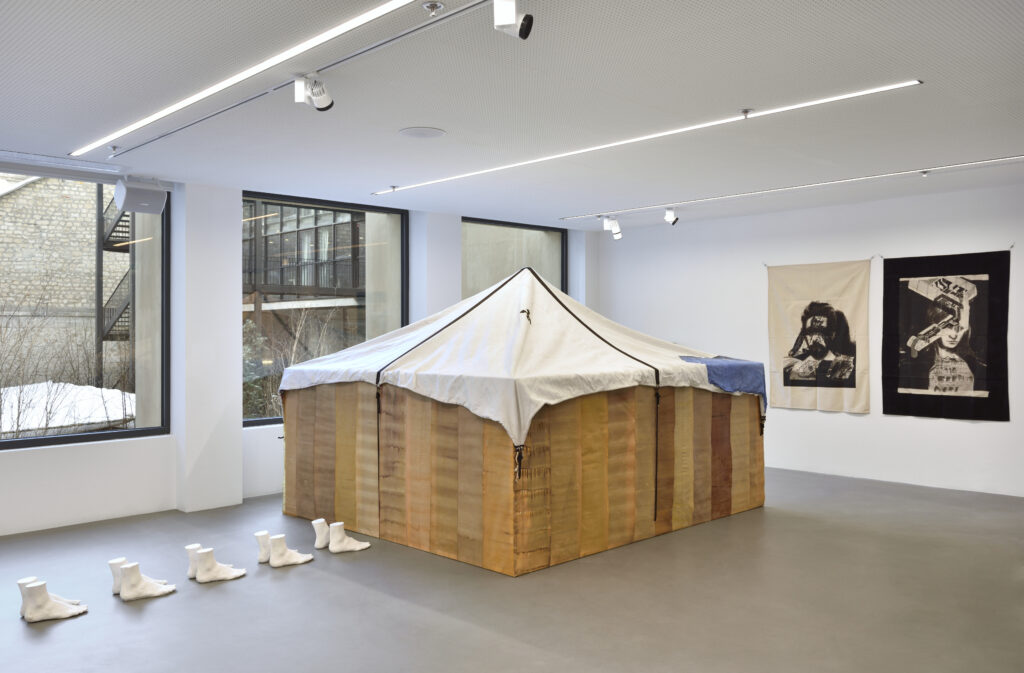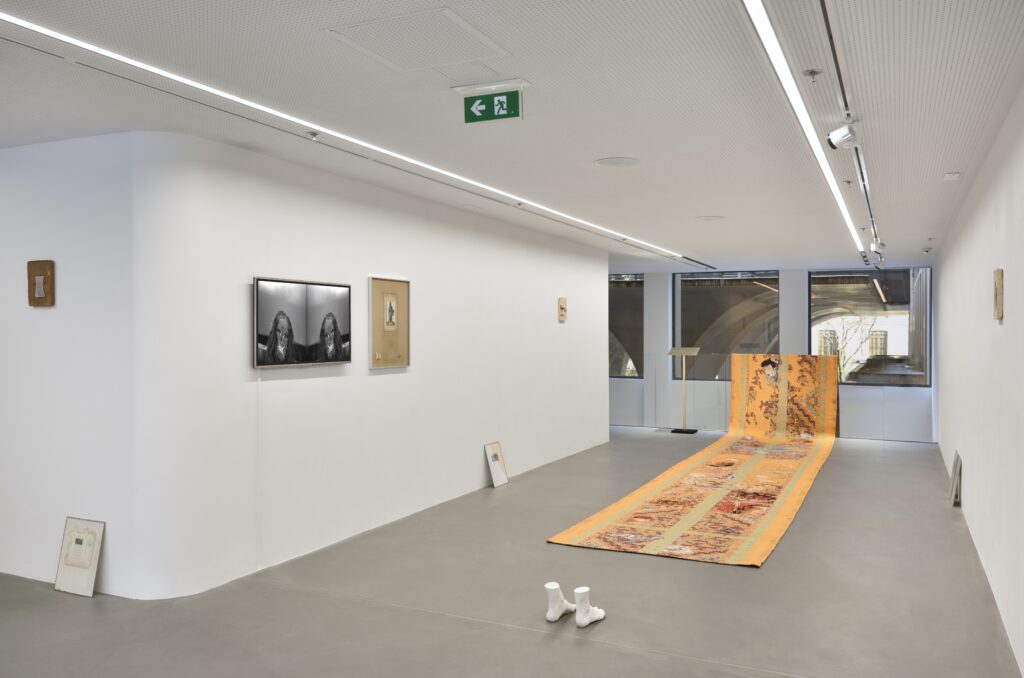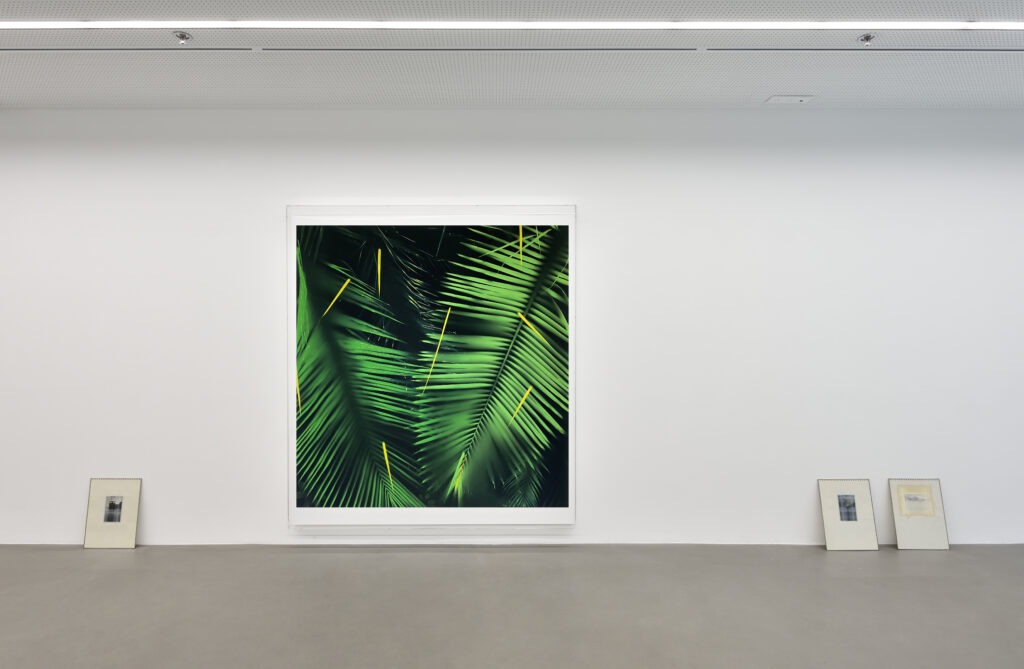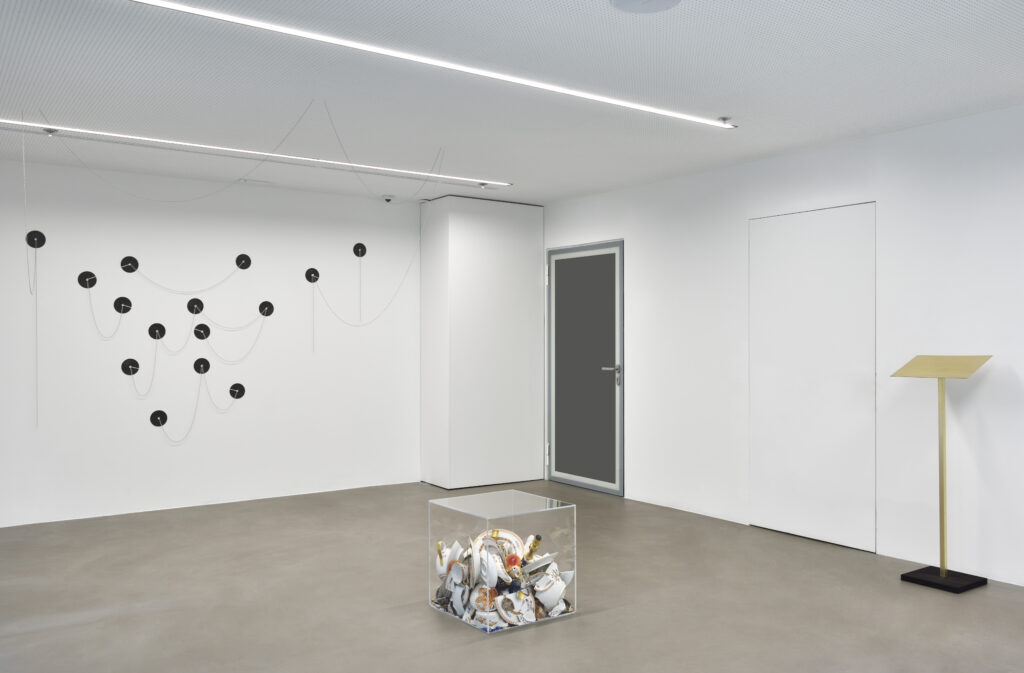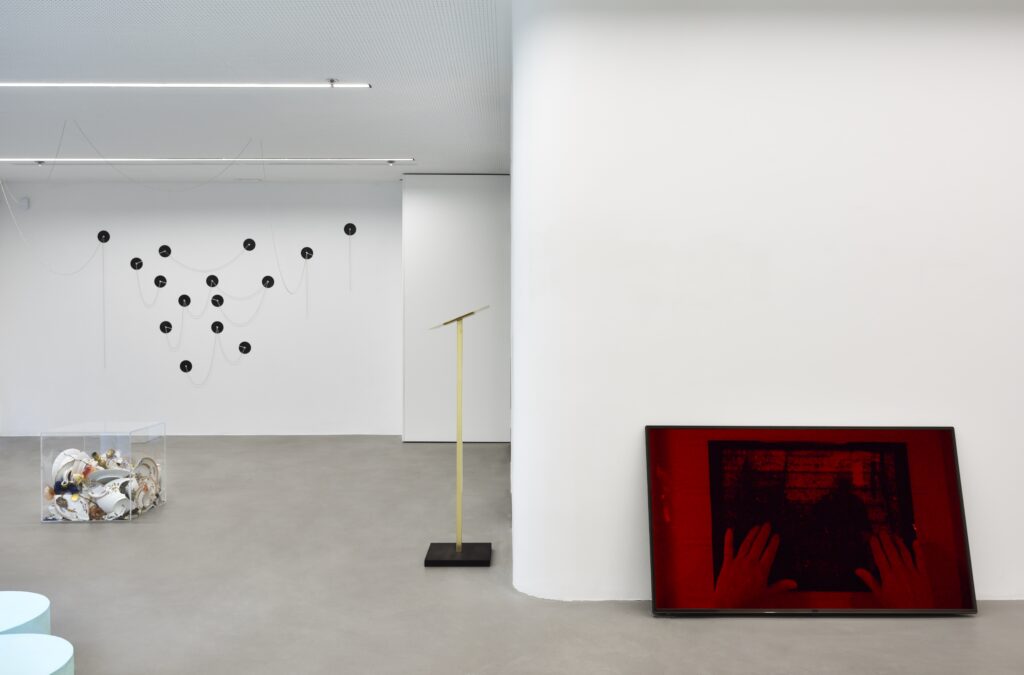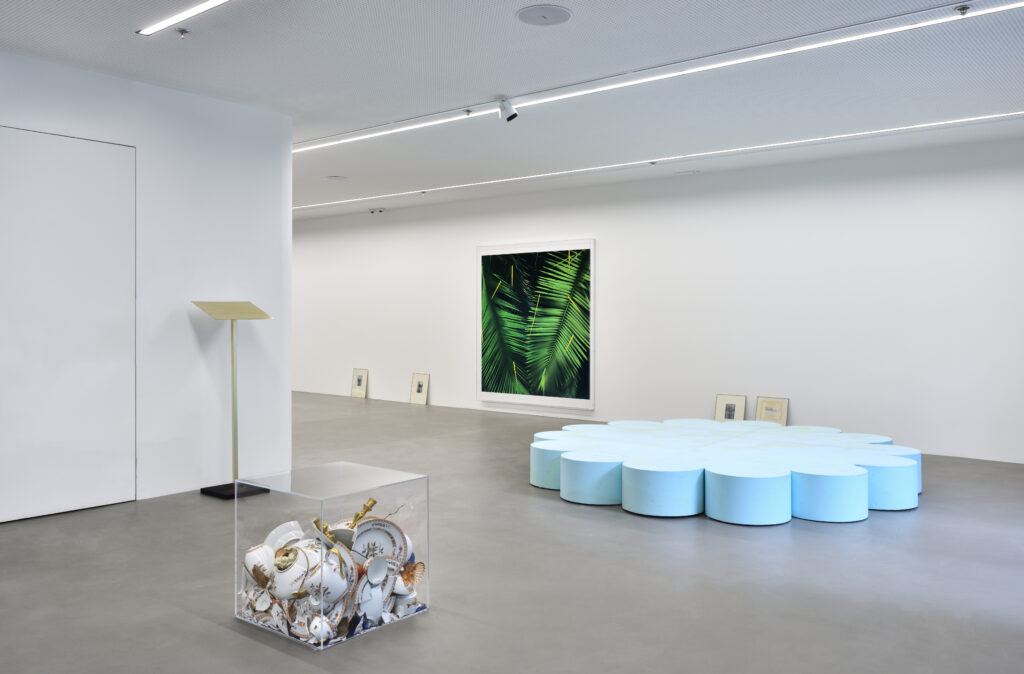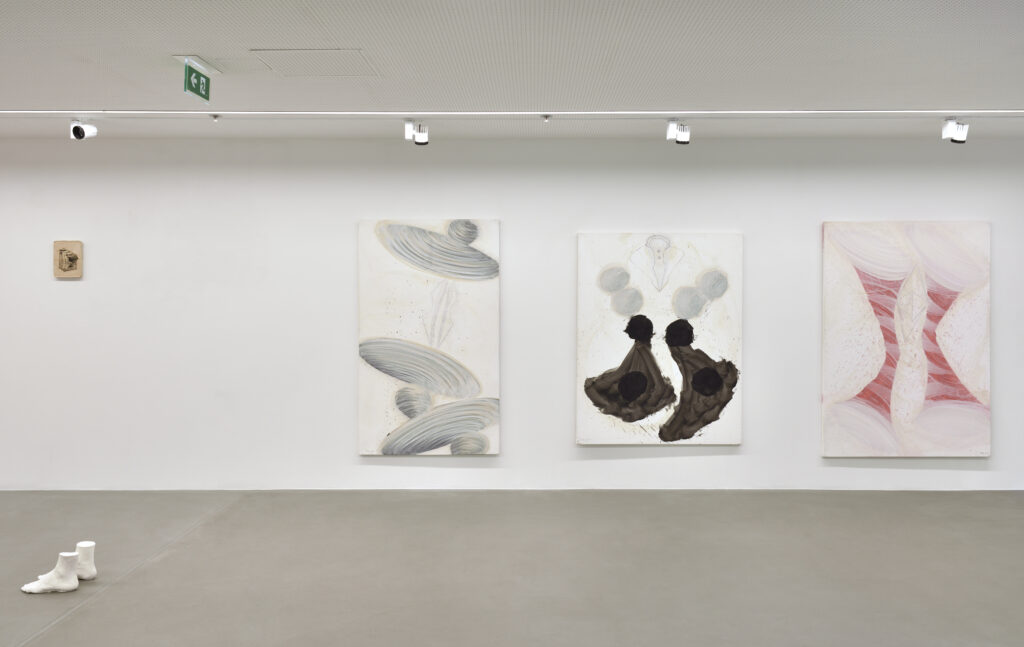For the beginning of the year, L’Atlas invites the iranian-londoner gallery Ab-Anbar for two successive exhibitions. The first one, The Earth has Shifted, gathers nine artists under the curation of Sarina Basta, from the cooperative Radicants : Marlon de Azambuja, Fadia Haddad, Mohammad Ghazali,
Hussein Nassereddine, Neda Razavipour, Hessam Samavatian, Azzedine Saleck, Baktash Sarang and Nil Yalter.
At the turn of the millenium, Earth’s spin started going off-kilter, and nobody could quite say why.[1]
It was with some surprise that geophysicists have measured a change in our planet’s rotational axis, data which started to be made public in the past year. The explanation : large amounts of water pumped out of the earth for household and agricultural use have shifted how the earth’s mass is distributed. And yet, even though everything is now slightly off-kilter, on the surface things remain the same.
In 1960, less than two decades after the nuclear disaster of Hiroshima and Nagasaki, writer Marguerite Duras was commissioned by filmmaker Alain Resnais to write a script about this tragedy. Duras’ task, puts forth a quandary : how does one attempt to convey that which is incommensurable, which is inadmissible, which is unfathomable ? Through the dialogue of the characters, set in Hiroshima, one of the main protagonists admits that the sequence of events was beyond what could be conveyed by a flat denial of any possible memory or description of the aftermath of the event. Within the banality of a romantic affair, a decade after the bomb, everyday life unfolds on the Peace Square in Hiroshima, and yet nothing will ever be the same.
The artists in The Earth has Shifted, have been invited to think about an Earth off-kilter, off-axis, where experiences or ruptures have left a trace or shift in our environment, difficult to convey or describe, yet present in our psyches.
About Ab-Anbar
In Persian, ab means « water » and anbar « reservoir ». This is how the contemporary art gallery Ab-Anbar, opened in Tehran in 2014, defines itself : as the architectural expression of a physical space which hosts a malleable and life-essential content. Involved in the crossed-stories of art and history, it represents worldwide artists, whose work overcomes esthetical, political, social and psychological borders. Since 2020, Ab-Anbar is settled in London, with a new space opened in September 2023 in the historical neighbourhood of Fitzrovia. Its ambition is to support dialogue between artists, collecters, museums and curators, toward inclusion and understanding of marginalised realities.
About Radicants International
Radicants is a curatorial cooperative, created in 2022 by Nicolas Bourriaud. Global in vision and scope, Radicants is designed as an organic and nomadic cooperative model, in phase with the evolution of the art world. The platform conceives innovative exhibitions, imagined by independent curators at the international level. Radicants specializes in exhibition production, cultural engineering, publications, and the sale of exhibitions and artworks and collaborates with the different actors in the art sector. Its mission is to offer cutting-edge exhibitions and to showcase emerging artists as well as those who have been overlooked in the history of art. The core team of Radicants is composed of Nicolas Bourriaud, Kuralai Abdukhalikova, Barbara Lagié and Cyrille Troubetzkoy.
[1] Raymond Zhong, “Something Was Messing with the Earth’s Axis. The Answer Has to do with us” in The New York Times, June 28, 2023
With
- Marlon de Azambuja
- Fadia Haddad
- Mohammad Ghazali
- Hussein Nassereddine
- Neda Razavipour
- Hessam Samavatian
- Azzedine Saleck
- Baktash Sarang
- Nil Yalter
Événement
Ab-Anbar
- 34 Mortimer Street , Londres, Royaume-Uni
- www.ab-anbar.com
